HTML
-
Symbiosis is an advanced association or relationship between organisms from different species, usually in which one or both of the individuals involved benefit in some way. Symbiotic relationships can be obligate, facultative, or endosymbiotic. In obligate symbiosis, the relationship between the two organisms is strictly symbiotic, and neither of them can survive apart from the other. Facultative symbiosis, on the other hand, is when the two species become involved in a symbiotic partnership by choice, and can exist separately. Obligate symbioses are ones that are often changed over an extended period of time, though facultative symbioses. It should be noted that sometimes facultative symbioses may change into obligate symbioses (Margulis 1971, Dimijian 2000, Das an & Varma 2009). Lastly, endosymbiosis is a relationship that occurs when one partner lives inside or on the body surface of the other partner, including in the coating of the digestive area (Frank 1997). Endosymbiosis can happen inside cells of the host organism (intercellular symbiosis), or outside the cells (extracellular symbiosis) (Aanen & Eggleton 2017).
-
Mutualism is the form of symbiosis where both partners benefit from the relationship, accompanied by a significant fitness gain for one or both partners. Mutualism can take the shape of resource-resource relationship, service-resource relationship, or service-service relationship (Batra 1979, Redman et al. 2001, Leigh 2010). Commensalism is a symbiosis where one partner benefits, and is often totally dependent on, the other partner for nutrients, shelter, or movement, without having a significant influence on the host. An example of commensalism is the relationship between whales and barnacles, whereby barnacles attach to the skin of whales, and benefit from the whale's speed of movement, feeding easily by exposure to ocean currents that carry food, while the whale is apparently not affected by their existence (Leung & Poulin 2008, Veiga 2016). Contrary to commensalism, amensalism occurs when one partner is inhibited or damaged by the presence of the other, who does not receive any benefits (Faust & Raes 2012, García et al. 2017). Amensalism may involve competition, in which one organism excludes another organism from its shelter, or from the location of its food source (Veiga 2016). Lastly, parasitism is the non-mutualistic form of symbiosis, taking place when only one of the organisms benefits at the expense of the other. Unlike predation, parasitism does not end in the direct death of the other organism, and usually it is imperative to the parasite's life cycle in order to keep its host alive. Sometimes, the parasitized host may die as a result of parasitic invasion, and here the invader is termed a parasitoid (Rodriguez & Hawkins 2000). Parasitism may also involve direct penetration of the host body to feed off tissue, manipulating behaviors that benefit the parasite, in which the parasite steals food or other resources from a host (Redman et al. 2001, Leung & Poulin 2008).
-
The Laboulbeniales is an order of fungi within the class Laboulbeniomycetes. They are also known by the common name, beetle hangers or labouls (Haelewaters et al. 2019). Laboulbeniales includes about 2325 different species of obligate insect ectoparasites that produce cellular thalli from two-celled ascospores (Blackwell et al. 2020). Recently, the genus Herpomyces was transferred to the order Herpomycetales based on molecular phylogenetic data (Haelewaters et al. 2018). Laboulbeniales usually do not cause the death of their hosts, but they may negatively influence host fitness if the parasite concentration is high. Laboulbeniales form individual thalli, and lack vegetative hyphae. A thallus is attached to its host by a dark-colored foot cell, and through this foot cell the fungus pierces the exoskeleton of its host in order to withdraw nutrients from the hemolymph (Pfliegler 2014). The outer side of the thallus may produce male structures (antheridia) or female structures (trichogynes and perithecia), or both. New infections are started when spores from the perithecia attach to a compatible insect host. Spore transmission can occasionally happen during insect copulation, which may explain the various site specificity reported in male and female hosts. It should be mentioned that these fungi can't grow separate from their hosts (Goldmann & Weir 2018). Haelewaters et al. (2016), reported that ascomycetous Hesperomyces virescens is a fungal ectoparasite (In order: Laboulbeniales) that was reported attacking adult ladybirds in the Western Cape Province, South Africa. Similarly, Haelewaters et al. (2014), reported the relation between Hesperomyces virescens and Harmonia axyridis in the eastern United States and Western Europe. For most species of Laboulbeniales, the mode of transmission is poorly understood and still needs to be investigated more deeply (Nalepa & Weir 2007), but it is possible that they are spread via direct physical contact between a male host and a female during mating, something that is called horizontal transmission (De Kesel 1993, Weir & Beakes 1995). On the contrary, vertical transmission is described in cases of species that attack insects such as termites and cockroaches (Whitney 1982). Weir & Hammond(1996, 1997), reported that approximately 80% of all known Laboulbeniales recorded from Coleoptera act as a host, approximately 25% of the Laboulbeniales have been reported as ectoparasites of Staphylinidae, and another 25% attack Carabidae. The species Hesperomyces virescens is described as one of the few among the Laboulbeniales in which the haustoria form several narrow branches radiating out into the body cavity (Batra 1979, Garcés & Williams 2004). Hesperomyces virescens is spreading around the world, following Harmonia axyridis as its main host. Fascinatingly, Hesperomyces virescens has also been found on a native species in South Africa, and is widely spreading in the United States and Europe (Gorczak et al. 2016).
-
Hesperomyces virescens Thaxt. (Ascomycota: Laboulbeniomycetes: Laboulbeniales) (Thaxter 1891) is an obligate fungal ectoparasite that infects adult ladybirds (Coleoptera: Coccinellidae). Although most Laboulbeniales show high host specificity, and are restricted to a particular species or genus, H. virescens is an exception as it can infect different ladybird beetle species from all over the world (Ceryngier et al. 2012, Haelewaters et al. 2016). Generally, H. virescens completes its whole life cycle on the integument of a living host where individual fruiting bodies or thalli are formed directly from ascospores (De Kesel 2011). These thalli can be formed on any part of the body of the insect (Haelewaters et al. 2012), but germination of spores is expected to start only when the host cuticle has hardened (Haelewaters et al. 2015) (Fig. 1). Many researchers have reported that the infection rate of Hesperomyces virescens is known to change significantly between localities and years or even seasons, and further studies on Hesperomyces virescens on Harmonia axyridis and other lady beetle species in Africa, Central and Eastern Europe may improve understanding of this parasite-host combination (De Kesel 2011, Ceryngier & Twardowska 2013, Haelewaters et al. 2014, Gorczak et al. 2016, Haelewaters et al. 2016). Gorczak et al. (2016), mentioned that infection rates can be influenced by host mass and abundant. Also, host gender affects the frequency of infection (Riddick & Schaefer 2005). Mature thalli of H. virescens were thicker on male rather than female hosts. Infection by H. virescens occurs when the basal cell of a two celled ascospore attached to the cuticle of a susceptible arthropod (De Kesel 1995). Infection can be limited to specific positions on the host (Terada 2005).
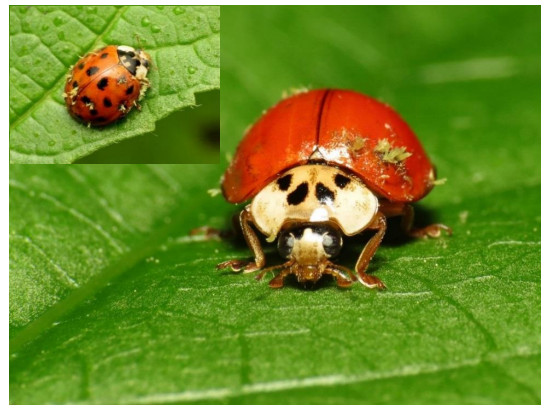
Figure 1. Hesperomyces virescens Thaxt. Family Laboulbeniaceae, Katja Schulz, Locality: United States, Columbia, Washington, USA, hosted by http://mycoportal.org).
-
The genus Septobasidium is a fungal genus within the phylum Basidiomycota, Class Pucciniomycetes, Order Septobasidales, and Family Septobasidiaceae. Approximately 175 described species are associated with this genus (Henk 2005). Septobasidium species are famous entomopathogens, and are commonly composed of a basidiomycetous fungus that forms symbiotic relationships with different insects. It forms irregular, flattened colonies that adhere closely to the bark and leaves of living trees, much like the growth of lichens. The colony may be flattened and only a few millimeters in diameter, or may grow around the circumference of a branch. Based on this description, Septobasidium appears to be nothing more than just another wood rotting fungus (Henk 2005, Henk & Rytas 2007, 2016). However, insect scales can be located in the central layer of the fungus, in chambers a little larger than the insects themselves, and are connected via several tunnels. Some of these insects are parasitized by the fungus that has inserted its specialized feeding hyphae (haustoria) into the body of the insect. These parasitized individuals are fixed, and usually occupy a chamber where they are attached to the plant via their sucking apparatus (the suctorial tube). The insect feeds itself with the plant sap that it gets through its suctorial tube, and since the fungus is attached to the insect by haustoria, it is indirectly being fed by the plant. Although this is a parasite/host relationship and seems to only favour the fungus, there are also benefits for the scale insect (a protective shield) as well (Henk 2005, Henk & Rytas 2007). A number of scale insects live within the so-call colony of the fungus, are protected from the environment, and have their food supply beneath them. In addition, they are also protected from predators. Thus, the fungus colony provides shelter to the insects, causing insects to live longer than their free-living counter parts (Fig. 2). Both the fungus colony and the insects may also over-winter without any harm coming to either partner. During the following spring, the female insects will be ready to lay its eggs and the fungus will continue growing. The larvae that arise will skulk about the colony, and if it should go to the surface, it will pick up the fungal spores, which will adhere to their bodies. Although a number of species of Septobasidium are known, few studies are available about this group and such relationships have not been well investigated. Moreover, the influence of the haustoria formed by the fungus on the insect has not been well studied (Masuya & Yamada 2007, Henk & Rytas 2016, Choi et al. 2016, Ma et al. 2019).
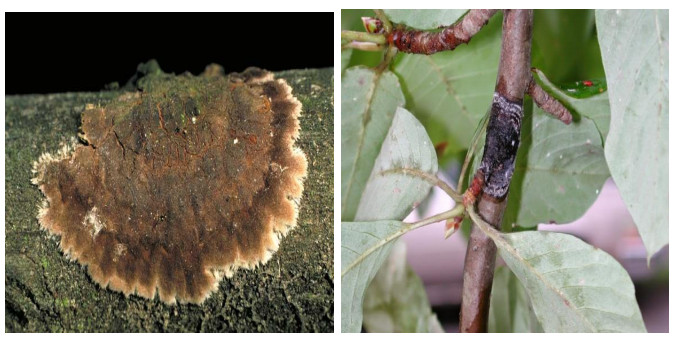
Figure 2. Different species from Septobasidium on tree bark and trunk of shrub. (Cited in http://alabamaallergy.azurewebsites.net/wonderful-world-fungi-interesting-symbioses/).
-
Some beetles inhabit wood, forming tunnels in diseased trees or those which have been cut. The tunnels are characterized by narrow openings that extend into a number of cave-like chambers where the insect will lay eggs, and larvae will develop (Kinuura 1995, Daterman 2002). These tunnels and chambers are fully lined with ambrosia fungi and are generally a rich source of nutrients for the adult beetle, and representing the sole source of food for the larvae. This is considered a highly symbiotic relationship between beetles and fungi, where neither the fungus nor the beetle species are found without one another living in nature. It should be noted that this relationship is harmful to numerous plants of high economic value (Biedermann et al. 2009, You et al. 2015, Kostovcik et al. 2015). During migration, the adult female beetle carries the fungus with them, and also when they are hiding during the winter. There is a specialized sac, the mycangia, that occur in different locations of the body in different species of insects. When the female finds a suitable plant on which to live, she bores a small hole to use as an access, which will then form chains of tunnels, and the fungus garden will start colonizing the colonnade walls. The mycangia produce secretions that prevent the spores from drying out, and provides nutrients required for spore germination at the same time (Hulcr & Stelinski 2017). When new tunnels are prepared and finished, the beetles prepare a mixture of feces and wood fragments which they smear on the tunnel wall as a substrate on which the fungus can grow. In this case, only a single fungus will grow on the tunnel walls (Fig. 3). Inoculated and germinated fungus serves as food for the newborn larvae along the colonnade or in special chambers called cradles, and these are sometimes responsible for tree destruction. Nevertheless, it is still unknown how the beetles uphold pure cultures of the ambrosia fungi. Sometimes, different contaminating fungi grow over the ambrosia when the tunnels are rough (Skelton et al. 2018, Birkemoe et al. 2018). Kinuura (1995), reported that ambrosia beetles (Scolylidae and Platypodidae) are forest insects that have alternative associations with specific fungal species. They also are considered to be forest pests that often severely damage wood production because their galleries penetrate deep inside the sapwood and the fungi produce a black staining color in the wood tissues surrounding their galleries. Like most bark beetles (Scolytidae), ambrosia beetles cannot utilize phloem and sapwood as primary nutritive substances to complete their development. Notably, both adults and beetle larvae feed on fungi instead (Hulcr et al. 2007, Mayers et al. 2015). Some studies have reported that the symbiotic beetle fungus association is highly species-specific, but many recent investigations have suggested that besides the single associated species, other yeast-like, filamentous fungi, and even bacteria present in the beetles and their galleries, are partly involved in the symbiotic relationship. Generally, the isolated fungi were classified into three groups: Ambrosiella spp., yeast-like fungi, and other fungi mainly Paecilomyces spp. Ambrosiella spp. were highly species-specific among scolytid species; Ambrosiella spp. was isolated from Scolytoplatypus mikado, Xylosandrus crassiusculus, and Xylosandrus brevis, respectively. Ambrosiella spp. were usually primary among the fungal groups in the egg/larval periods in the galleries and in the mycangia of each beetle species, and also yeast-like fungi were continually isolated from the galleries (Kinuura 1995, Gebhardt et al. 2004, Knížek & Beaver 2007, Kolařík & Hulcr 2009, Malacrino et al. 2017).
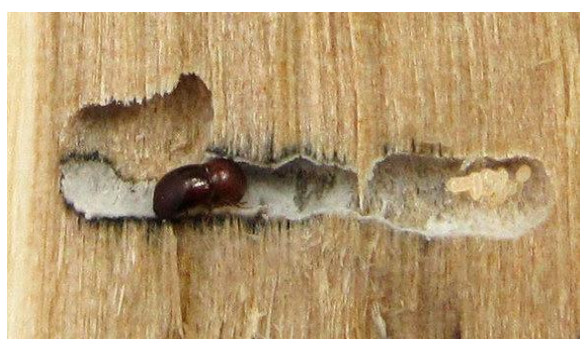
Figure 3. Beetle Gallery with mature beetle, larvae and cultivated fungus. (Cited in: https://sites.google.com/site/135botany/home/lect27-fungi-and-insect-symbioses).
-
Leaf-cutter ants include Atta cephalotes, Atta colombica, Atta sexdens, and more than 47 other species of tropical, fungus-growing ants present in South and Central America, Mexico, and parts of the southern United States (Speight et al. 1999). Leaf-cutter ants collect and carry leaves to their colony, where they are used to build and feed the colony's fungus garden, which appear as a white mat at first, then undergo a colour change depending on the fungal age and fungal type (Bot et al. 2001). The fungus garden shapes are sponge-like in appearance and are composed of numerous cavities which the ant workers walk through (Aylward et al. 2012). Colonies of Atta sexdens start from a single winged female that represents the future queen, carrying in a pocket in the back of her mouth a small fungus inoculum. The already fertilized winged female can lay about 300 million eggs through her lifetime. When this winged female finds an appropriate place for her future colony, she takes out the fungus from her mouth and inoculates it over a suitable plant material. After that, the fungus grows, and the queen starts to lay her eggs over the fungus. At first, she is laying approximately fifty eggs daily, which are eaten by her for about three months to feed herself until the worker population becomes available (Aylward et al. 2012, Swanson et al. 2019). The fungus provides the ants with a stable supply of essential amino acids and proteins. These fungus growing ants have diversified into more than 200 species over the 50-million-year evolutionary history of this agricultural relationship. Some of these ant species adapt by growing antibiotic producing bacteria on their bodies as a way to fight pathogenic microbes that attack the fungus, hence keeping the garden is kept healthy. Such bacteria associated with the many species of leaf-cutter ants currently represents a rich and novel source of potent antibiotics that can be used in the fight against emerging antibiotic resistant human pathogenic bacteria and fungi (Hart & Ratnieks 2002, Schultz & Brady 2008, Pagnocca et al. 2008, Scott et al. 2010, Aylward et al. 2012). Together with the different species of ants, the colony contains only one species of fungus. The worker ants, in searching the mycelium with their antennae, are able to differentiate their fungus from unfamiliar and strange fungi. When foreign fungi are detected, the workers Ants remove them (Russell et al. 2017). Also, some species are capable of producing antibiotics to eliminate foreign and/or undesirable insects. Inevitably, some foreign fungi are present, but with the far more prevalent, cultured fungus, they are unable to compete or colonize any part of the garden. When the ant colonies are uncontrolled and abandoned because of migration, the fungus garden is left behind and becomes contaminated with other fungi and bacteria. Before leaving their colony, ants always take some of the fungus garden with them as an inoculum to start their new fungus garden (Khadempour 2018), (Fig. 4). Identification of fungal species involved in these ant colonies were conducted by collecting cultures (or fruiting bodies) and preserving them in the laboratory. Mostly, samples are identified to be species of the fungal genera Leucoagaricus and Lepiota. Other associated fruiting fungi include the ascomycetous mushrooms Auricularia, and Xylaria. For unknown reasons, these species do not form fruiting bodies around or near the colony (Currie 2001, Mueller et al. 2001, Mueller 2002).
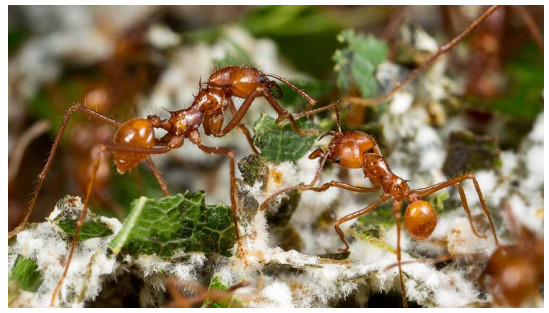
Figure 4. Leaf-cutter ants and fungus garden. (Cited in: www.biointeractive.orgclassroom-resourcesworking-ant-farm).
-
Termites that consume wood are one of the worst pests imaginable in our human-constructed worlds. However, in natural environments they play an important role in the biodegradation of plant material. Most termites have symbiotic bacteria in their gut that allow them to digest cellulose, thus recycling plant material. In addition, because of their large biomass, they also serve as a food source for a number of other species of animals (Rouland-Lefèvre 2000, Rouland-Lefèvre et al. 2006). Termites belong to the subfamily Macrotermitinae, which include approximately twelve genera that are distributed in Africa, Madagascar, India and much of south-east Asia. Unlike their new-world equivalent, these termites do not have bacteria in their gut to digest cellulose. Instead, as is the case with the Attine ants, the fungi that they cultivate will digest the plant material, and the termites will eat the fungus (Nobre et al. 2010, Gomathi et al. 2019).
Termitomyces is an edible mushroom that belongs to family Lyophyllaceae, and is frequently consumed in Africa and Asia as an edible wild mushroom (Mueller et al. 2005). Generally, Termitomyces mushrooms have a unique life cycle and grow as symbionts exclusively inside nests of macrotermitine termites, as shown in Fig. 5, producing different potent enzymes that help termites in digesting lignocellulosic substrates (Aanen et al. 2009, Elkhateeb & Daba 2020). Termitomyces have been described in much literature under various names (Sangvichien & Taylor-Hawksworth 2001, Wei et al. 2009, Makonde et al. 2013, Elkhateeb & Daba 2020). Fruiting bodies of Termitomyces are rich sources of nutrients and have significant medicinal value. Numerous species of Termitomyces were used centuries ago by many ethnic groups with ethnomedicinal knowledge (Hsieh & Ju 2018). The termite-fungus symbiosis is obligatory for both partners, the termites get nitrogen-rich food in exchange for providing a protected growth environment and a growth substrate for the fungi. Termites and fungi have a harmonious relationship that has lasted for more than 30 million years (Elkhateeb & Daba 2020, Wisselink et al. 2020).
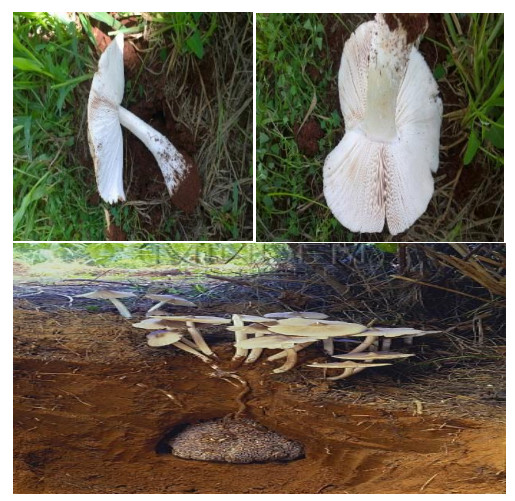
Figure 5. Cross section in soil showing attachment of Termitomyces mushrooms to Termite nest (Photographs taken by Masana Izawa, hosted by https://www.mindenpictures.com).
-
Studying the nature of the relationships between organisms in general, and fungi-insects in particular, is very interesting. Fungi are generous sources of various secondary metabolites, their existence in symbiosis with other creatures is attracting scientists' attention. Knowing how those creatures benefit from each other will contribute to our ability to understand the complex nature of interaction between organisms. This may be used for biocontrol purposes, or even for discovery of novel metabolites that result from these associations, such as those produced by ants to protect their fungus gardens. These metabolites could be of great importance, as they may not be produced individually by the species involved in these relationships, but rather are emergent only in symbiosis. Moreover, such metabolites can be evaluated for their activity against currently existing diseases and also new emerging lethal diseases. The introduced models in this review are highlighting how these sophisticated relations can exist in the environment, and what are the impacts on the survival and productivity of each partner.
- Copyright: © 2021 by the author(s). This article is an open access article distributed under Creative Commons Attribution License (CC BY 4.0), visit https://creativecommons.org/licenses/by/4.0/.
| W Elkhateeb, SC Karunarathna, GM Daba. 2021. Fungi and insects as models of extraordinary symbiosis. Studies in Fungi 6(1):469−479 doi: 10.5943/sif/6/1/36 |












